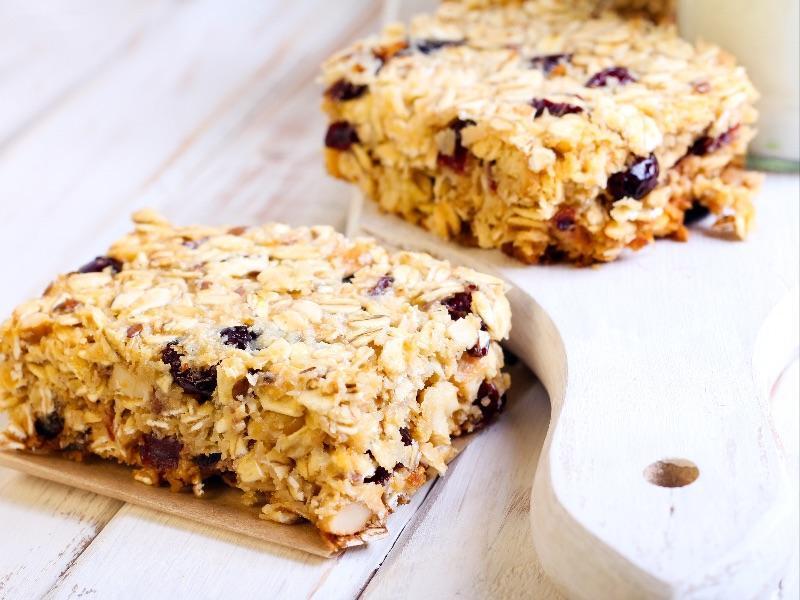The months of fall offer up an abundance of fresh produce, and not only do these colorful ingredients make for some delicious meals, many of them are also directly beneficial to your skin. Fall can be quite a stressful time for your skin, as it is having to deal with the transition from summer to winter, so, to help it out a bit, here are 8 fall foods that you should be eating more of.
Pumpkins
Pumpkins are synonymous with fall, and are packed with so many vitamins and minerals that are incredible for the skin:
- Vitamin A: Vital for healthy skin cell production and growth
- Vitamin C: A strong antioxidant and necessary for the production of collage
- Vitamin E: Fights free radicals and prevents the deep damage that they can cause
- Magnesium: Improves overall appearance of skin, and reduces acne
- Zinc: Controls oil production and hormone levels – great for acne
- Fatty Acids: Keeps your skin’s natural protective barrier strong and healthy
In addition to this, pumpkins also contain vitamin K, iron and potassium.
While pumpkins may offer up so many benefits, not only to the skin but also the body, many people find it difficult to think up of easy-to-make pumpkin dishes.
Here are a few recipe ideas that you can look into, and these make full use of the pumpkin, from skin to seed:
Pumpkin Seeds
- Roasted and salted
- Chocolate-covered
- Salted caramel
- Spicy roasted
You can then either snack on these on their own, mix them in with some granola, or create your own trail mix by adding in some dried fruit and nuts.
Pumpkin Flesh
- Soup
- Bread
- Cookies
- Hummus
- Pancakes
Pumpkin Skin
- Roasted
- Chips
- Crisps
Now, you might be wondering…
Can pumpkins also be used topically on the skin?
The answer is a big yes. Using skin care ingredients that contain pumpkin, or making your own face masks with it, will bring all of the benefits of pumpkin directly to your skin. Since the molecular structure of pumpkin is extremely small, this is an ingredient that can effectively penetrate deeply into the skin when applied topically.
Pumpkins tend to be available in stores and markets from October onwards, and are at their best earlier on in the season.
Want to stock up on fresh pumpkins?
Pumpkins can be stored for up to three months, as long as they are kept in a cool and dry place, meaning that you can buy a supply for the winter months all at once.
Apples
Apples are one of the most antioxidant-rich fruits out there, and can really help to prevent damage to skin cells.
They also contain vitamin C, which is fantastic for slowing down the aging process, as well as a wide range of B vitamins, which have been proven to fight against acne and irritation.
Are you someone that tends to peel apples before eating them?
Well, removing the skin means that you are also removing two thirds of all of the goodness that an apple contains, so try to start eating them skin-on.
There are many dishes out there that make use of apples, both savoury as well as sweet:
Savoury
- Carrot, apple and rosemary soup
- Apple coleslaw
- Apple Brie salad
- Sausage and apple casserole
- Apple and cheddar quiche
Sweet
- Apple pie
- Apple crumble
- Apple strudel
- Baked apples with a salted caramel sauce
- Apple galette
Apples are a fruit that can be bought in bulk and then stored for around four months, meaning that you will have a constant supply of your favorite varieties throughout the winter.
To do this, wrap each apple in some newspaper and then place into a box, keeping this box somewhere cool and dry, such as a basement or garage.
Pomegranates
Pomegranate season begins around September, and this tangy fruit is a powerhouse when it comes to skin-boosting antioxidants and nutrients. In fact, studies have shown that pomegranate juice contains more antioxidants than red wine.
Why are antioxidants so important for the skin?
Well, antioxidants fight against free radicals, which would have otherwise caused a huge amount of damage to skin cells. Free radicals are created by everything from exposure to UV rays to pollution, and can go as far as altering the DNA of your skin cells.
There is also plenty of vitamin C to be found in pomegranates, as well as vitamin E, both of which are fantastic anti-aging vitamins.
Speaking of anti-aging…
Pomegranates contain phenolic compounds, which means that they are able to prevent the breakdown of collagen in the skin. Since collagen is a key part of the skin’s supporting structure, this has a huge impact on wrinkles, fine lines and sagging skin.
While pomegranate seeds eaten on their own are sweet and juicy, here are a few other tasty ways to make use of this fruit:
- Sprinkled onto salads or blitzed into a salad dressing
- Mixed in with couscous
- Blitzed into a dip with peppers, walnuts and olive oil
- As a garnish for meat dishes
- Sprinkled onto desserts
- Juiced
Not quite sure how to select fresh pomegranates when at the store or market?
Try to pick fruits that have a deep, intese color, and that have a red or red/brown outer rind. When pomegranates are purchased relatively fresh, they will store in the refrigerator for up to four weeks, so long as they have not yet been opened.
Carrots
Carrots come into season twice a year, once in the late spring and then once again in the fall. If you did not make the most of the abundance of carrots available in the spring, now is your chance.
Orange carrots contain beta-carotene, which your body turns into vitamin A, a vitamin that is so important when it comes to the production of new skin cells, as well as keeping the skin firm and healthy.
Eating just one small orange carrot a day means that you will be receiving almost 300% of your daily vitamin A intake, making this a vegetable well worth eating more of.
If you have visited your local farmers market recently, you may have noticed that there are carrots available in quite a wide range of colors. While carrots of every color are fantastic for your skin, each pigment also brings with it additional health benefits:
- Orange carrots – contain beta-carotene, as mentioned above
- Purple Carrots – contain anthocyanins, which destroy free radicals and prevent heart disease
- White Carrots – the least healthy of the carrots
- Yellow Carrots – beneficial for the eyes, and for preventing certain tumours
- Red Carrots – contain lycopene, great for fighting acne and promoting overall skin health
As you can see, the darker colored carrots tend to be better for your skin, but there is no reason as to why you cannot create dishes that make use of a variety of carrot colors.
Wondering whether they taste different?
Yes, there is a slight difference in taste between each color. The lighter colored carrots taste milder, and do not have the same earthiness that darker carrots have. They also tend to be a bit sweeter.
Now that you know the differences between the different carrot colors out there, you need to know how to pick the very best ones…
Make sure that the carrots you choose are firm and have a vibrant color, as well as a smooth skin. Medium-sized carrots that taper at the end will have the ideal balance of nutrients and taste. Be sure to avoid carrots that are limp, or have cracks and lots of hairy roots, as these are a sign that they are quite old.
Need some inspiration?
- Spiced roasted carrots
- Carrot soup
- Carrot cake or cupcakes
- Glazed carrots
- Carrot juice
Walnuts
When it comes to the different types of nuts out there, walnuts are the king. Here are just a few of the reasons why:
- Filled with antioxidants that fight free radicals
- Contains omega-3 fatty acids, which strengthen skin cell membranes, lock-in moisture and nourish dry skin
- Their potassium content can reduce puffiness, as well as loose skin
- Rich in fibre which boosts the circulation, leading to a healthier complexion
- Packed with protein, which is essential for repairing and producing skin cells, as well as reducing scars
Surprised?
Fortunately, walnuts come into season in the fall, making this the perfect time to begin making the most of their incredible skin benefits.
So, how many walnuts do you need to eat each day?
The recommended amount is seven to nine walnuts a day, and you do need to make sure that you do not over-eat when it comes to these, as too many can cause weight gain.
Want some new and exciting ways to enjoy walnuts? Try these:
- Walnut Butter – a delicious alternative to peanut butter
- Maple-Candied Walnuts – a healthier alternative to the sugar filled candied nuts available in stores
- Walnut and Mushroom Soup
- Lentil Walnut Burgers
- Coffee Walnut Cake
As delicious as those dishes sound, you are likely also wondering…
“Is there any way I can use walnuts directly on my skin?”
There is, in the form of walnut oil. This can be used on its own on your skin, or can even be mixed in with a bit of your regular moisturizer.
When used topically, walnut oil can do everything from reducing the appearance of wrinkles to fighting free radicals to preventing skin infections.
Cranberries
Sweet and tart at the same time, cranberries are a fruit that do so much for the skin, earning them the reputation of being a “super fruit”.
So, how do you usually eat cranberries?
If the answer is: from a jar, as a pre-made sauce, or as a pre-made juice, then you are really missing out.
Nothing quite beats the benefits that fresh cranberries can bring to the skin:
- Packed with antioxidants
- Aids in the production of collagen, thanks to its vitamin C content
- A potent anti–inflammatory
- Contains vitamins B3 and B5, which speeds up cell turnover
When used topically, cranberries can also:
- Exfoliate the skin
- Unclog sebaceous glands and help with oily skin
- Minimizes acne and pimples
So, other than eating the fruit as a sauce or a jam, how else can you increase your intake of cranberries?
Here are a few ideas to give you some inspiration:
- Cranberry salsa
- Cranberry and Brie pastry tarts
- Cranberry oatmeal bars
- Cranberry apple relish
- Cranberry bread
Fresh cranberry juice is another easy way to consume more cranberries, as well as one of the most beneficial, but unsweetened cranberry juice on its own can be quite tart. Instead of forcing that down, try adding a bit of a twist to your juice:
- Cranberry, ginger and orange punch
- Cranberry and pineapple juice
- Green juice with cranberries
- Cranberry and apple juice
- Cranberry and pomegranate juice
Bringing These Fall Foods Together
Seasonal produce will usually work together well when used in one dish, so try seeking out recipes and meals that combine a few of these fall foods.
Stuck for ideas? Give these flavor combinations a try:
- Carrot, apple, pomegranate seeds and walnut salad, with Indian spices and dressing
- Carrot, walnut, cranberry and apple muffins
- Pumpkin and walnut waffles served with apple slices
- Cranberry, pomegranate and walnut pie
No matter how you end up eating these fall foods, try to limit the amount of sugar that you consume with them, as this can really be detrimental to your skin. Instead, try to keep these ingredients as pure as possible, because, if you buy quality ingredients, they will be able to shine out all on their own.









Leave A Comment